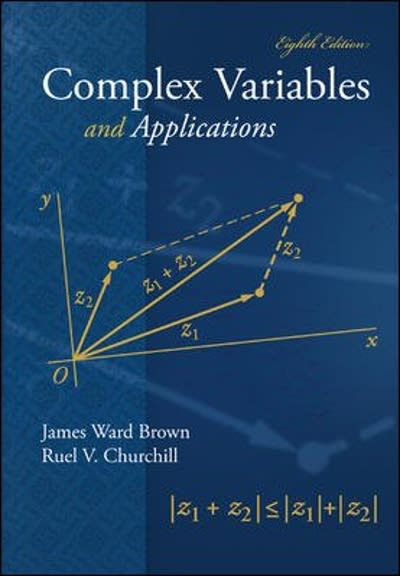Question
Scenario 7 PREOPERATIVE DIAGNOSIS Endometrial intraepithelial neoplasia, grade III, on cervical biopsy and endocervical curettage. POSTOPERATIVE DIAGNOSIS Endometrial intraepithelial neoplasia, grade III, on cervical biopsy
Scenario 7
PREOPERATIVE DIAGNOSIS
Endometrial intraepithelial neoplasia, grade III, on cervical biopsy and endocervical curettage.
POSTOPERATIVE DIAGNOSIS
Endometrial intraepithelial neoplasia, grade III, on cervical biopsy and endocervical curettage.
PRIMARY PROCEDURE
1. CONE BIOPSY.
2. ENDOCERVICAL CURETTAGE.
3. ENDOMETRIAL CURETTAGE WITH BIOPSY.
FINDINGS AND PROCEDURE
After the induction of adequate general endotracheal anesthesia, the patient was placed in the dorsal lithotomy position. Examination under anesthesia demonstrated a small cervix and uterus without any adnexal masses. The cervix was firm to palpation. The speculum demonstrated a cervix that was smooth and without lesions. Colposcopy was performed and was noted to be unsatisfactory. No lesions were seen. Cone biopsy was then performed with a sound in the cervix. This was difficult to accomplish due to the cervix being flush with the uterus. The cone biopsy was tagged at 12 o'clock. No cone tip was cut. Endocervical curettage was performed. Endometrial curettage was then performed. The uterus sounded to 4 cm, and scant tissue was obtained. Hemostasis was then assured. The Bovie was used to control any bleeding. Patient tolerated the procedure satisfactorily; however intraoperatively the patient did have an increased blood pressure that was controlled quickly with nadolol. The patient's blood pressure then was stable at 120/60. Anesthesia: General endotracheal. Estimated blood loss: 10 mL. Intravenous fluids: 1600 mL. Lines: IV and arterial line. Urinary output during the procedure: 700 mL. Drains: None. Count: Correct.
The specimens that were sent to pathology: (1) Cone biopsy, (2) endocervical curettage, (3) endometrial curettage. Urine was sent for cytology.
ICD-10-CM:
CPT:
CPT:
Use your ICD-10-CM and CPT to determine accurate diagnoses (no external cause codes apply) and E/M codes.
22.Scenario 8
Bobby was playing softball when he misjudged the ball, and it hit him in the nose. He was taken to the emergency department at the hospital. Dr. Jones performed a detailed history and an expanded problem focused exam, with a moderate complexity medical decision making. Bobby was diagnosed with a nasal contusion and released.
ICD-10-CM:
E/M:
23.Scenario 9
Chester has an appointment for a follow up on his asthma. He is wheezy and having labored breathing. His established physician performs an expanded problem focused history and exam. No further treatment is recommended. Chester is to return in 3 months to follow up on his asthma.
ICD-10-CM:
E/M:
24.Scenario 10
Kathy, a 33-year-old established patient, sees Dr. Owens in her office for what she thinks is a sinus infection. Her history is documented as problem focused, while the exam is expanded problem focused with a decision making of moderate complexity. Her diagnosis is acute maxillary sinusitis.
ICD-10-CM:
E/M:
25.Scenario 11
Franco, a new patient to the office, went to see Dr. White complaining of pain in his upper arm. He had been experiencing some muscle weakness and had difficulty getting out of the bathtub. Franco also has a rash and fever. Dr. White documents a detailed history and exam because of Franco's past medical history of rheumatoid arthritis. The medical decision making was of moderate complexity. Dr. White diagnosed Franco with infective myositis in the upper arm.
ICD-10-CM:
E/M:
26.Scenario 12
Jerry called his doctor when he had a sudden onset of nausea, abdominal cramping and bloody diarrhea with mucus. Dr. Smart had Jerry come to the office right away, and Dr. Smart documented an expanded problem focused history and performed a detailed examination. The medical decision making was moderate complexity. Dr. Smart determined Jerry had noxious food poisoning. Jerry was sent home to rest. Dr. Smart told Jerry that the symptoms should subside within 5-7 days. Jerry was told to watch for dehydration and to call immediately if he felt he was not getting any better.
ICD-10-CM:
E/M:
Step by Step Solution
There are 3 Steps involved in it
Step: 1

Get Instant Access to Expert-Tailored Solutions
See step-by-step solutions with expert insights and AI powered tools for academic success
Step: 2

Step: 3

Ace Your Homework with AI
Get the answers you need in no time with our AI-driven, step-by-step assistance
Get Started


